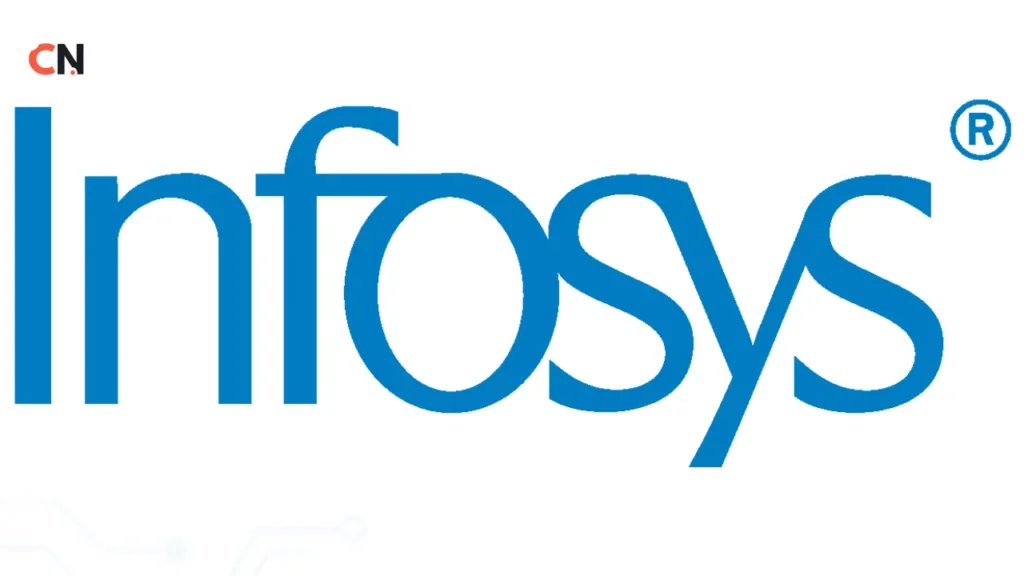
Infosys Limited has set a new benchmark in the IT services industry with its groundbreaking Poly-AI strategy, a flexible, enterprise-grade framework that integrates multiple AI models and providers to create a cohesive, scalable ecosystem. This hybrid artificial intelligence approach, part of Infosys’s broader AI-first initiative, combines traditional AI, generative AI, and agentic AI to address complex business challenges, allowing organizations to swap models seamlessly without disrupting workflows.
At its core, Poly-AI features key components such as the LLM Hub for managing model versioning and compliance; Prompt Management for optimizing instructions across models; an Evaluation Chassis that uses automated datasets and LLMs-as-judges to assess performance; a Caching Framework to store and reuse responses for efficiency; and AI Gateways for secure request handling and throttling.
By enabling poly-agent architectures—where intelligent agents interoperate across diverse systems—Poly-AI ensures agility and future-proofing, helping enterprises deploy specialized models for tasks like code generation, customer service, and semantic search.
The strategy is delivering tangible benefits to clients, including manpower cost reductions ranging from 5% to 35% through automation of manual processes, reduced recomputation, and enhanced operational efficiency—exemplified by deployments like a telecom platform that served over 50,000 users and generated millions in savings.
This not only amplifies human potential via AI assistants but also fosters responsible AI practices with governance and guardrails, positioning Poly-AI as a prime driver of industry-wide transformation toward sentient, AI-powered organizations.
Latest Developments in Infosys’s AI Journey
Infosys Limited, a global leader in digital services and consulting, continues to advance its AI-first strategy through innovative initiatives like Poly-AI and the Topaz™ platform.
Below is a detailed explanation of the provided timeline, highlighting key milestones from early 2025 onward. These developments underscore Infosys’s commitment to responsible, scalable AI that drives cost efficiencies, enhances enterprise workflows, and builds trust in AI adoption. I’ve broken it down chronologically, drawing on recent reports and announcements for context.
August 15, 2025 – Major Announcement on Poly-AI Cost Savings
On August 15, 2025, Infosys made a significant announcement emphasizing the real-world impact of its Poly-AI strategy. Executive Vice-President Balakrishna DR (often referred to as Bala DR) confirmed that the company’s Poly-AI approach is delivering substantial cost savings for clients. These savings, ranging from 5% to as high as 35% in manpower costs, vary based on factors such as process complexity, industry type, and data availability.
Poly-AI is Infosys’s hybrid AI framework that integrates multiple AI models (e.g., traditional AI, generative AI like large language models, and agentic AI) into a flexible, enterprise-grade ecosystem. This allows organizations to mix and match models from different providers without disrupting operations, optimizing for efficiency and agility. The cost reductions stem from automating manual processes, such as model evaluation, prompt optimization, and response caching, which traditionally require significant human intervention.
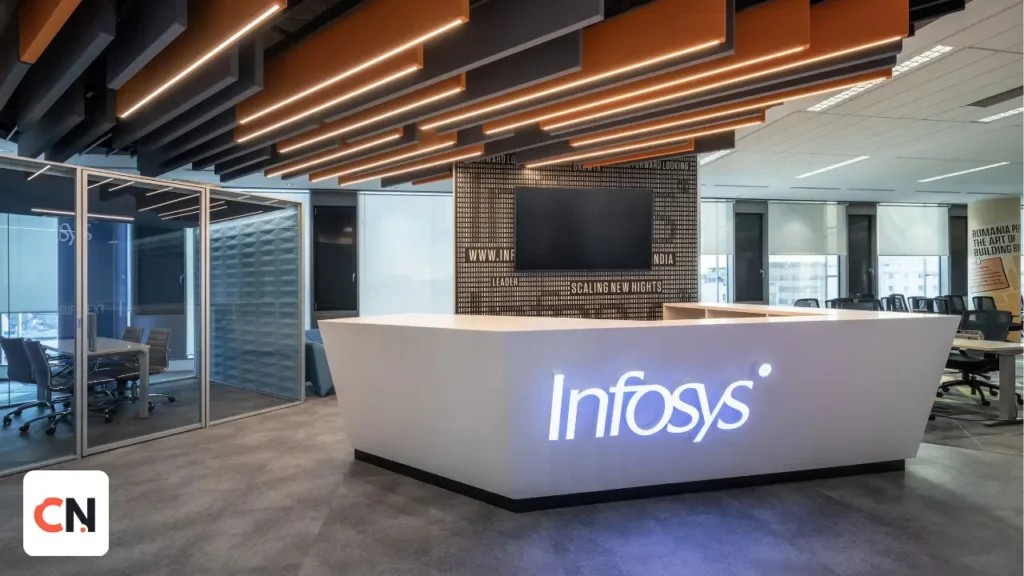
For instance, in industries like telecom or manufacturing, where data is abundant but processes are complex, savings can hit the upper end of the spectrum by reducing recomputation and enhancing productivity. Bala DR highlighted that this approach not only cuts costs but also boosts overall business transformation, positioning Poly-AI as a key tool for “AI-powered organizations.”
This announcement comes amid broader industry trends, where 93% of enterprises plan to increase AI investments in 2025, focusing on decision-making rather than just automation.
May 29, 2025 – Launch of 200+ Enterprise AI Agents
A pivotal milestone occurred on May 29, 2025, when Infosys launched over 200 Enterprise AI Agents under its Topaz™ platform, in collaboration with Google Cloud’s Vertex AI. These agents are designed to automate complex workflows and provide specialized solutions tailored to sectors like healthcare, finance, and manufacturing.
The Enterprise AI Agents represent an evolution in “agentic AI,” where AI systems act autonomously or semi-autonomously, handling multi-step tasks across diverse systems. Built on Vertex AI’s robust infrastructure, these agents enable businesses to orchestrate workflows involving multiple agents—such as in supply chain optimization for manufacturing or fraud detection in finance—while ensuring seamless integration with existing tools.
For healthcare, agents might assist in patient data analysis or predictive diagnostics; in finance, they could streamline compliance checks; and in manufacturing, they support predictive maintenance. This launch is part of Infosys’s broader AI-first initiative, leveraging Topaz™ to create “poly-agent architectures” that are scalable and adaptable. The collaboration with Google Cloud emphasizes multi-agent coordination, reducing operational disruptions and accelerating deployment.
By flooding the market with these agents, Infosys aims to empower enterprises to achieve faster ROI, with examples including autonomous testing in software development.
February-March 2025 – Responsible AI Initiatives and Report Releases
The early months of 2025 saw Infosys focusing on ethical AI governance, with several interconnected launches and releases aimed at promoting transparency and trust.
- Open-Source Responsible AI Toolkit Launch (February 26, 2025): Infosys unveiled its open-source Responsible AI Toolkit as part of the Topaz™ Responsible AI Suite. This toolkit addresses ethical concerns in AI adoption, including risks like bias, privacy breaches, and security vulnerabilities. It provides tools for enterprises, startups, and academia to ensure AI solutions are safe, fair, and compliant, with features for monitoring, auditing, and mitigating issues in real-time. The open-source nature fosters an inclusive ecosystem, allowing global contributions to enhance AI trustworthiness.
- Top 10 AI Imperatives for 2025 Report Release (Around March 2025): Infosys released its “Top 10 AI Imperatives for 2025” report, outlining strategic priorities for CXOs to transform enterprise AI. Key imperatives include adopting smaller, focused models; embracing agentic AI; implementing Poly-AI for flexibility; and prioritizing greener hardware and fingerprinted data for sustainability and security. The report emphasizes evolving from static to adaptive processes and building AI foundries for innovation, based on surveys showing 95% of executives facing AI mishaps and only 2% meeting responsible AI standards. It positions AI as a tool for value creation, such as developing new products (cited by 10% of respondents as a top goal).
- Transparency and Trust Building Initiatives: These efforts tie into the toolkit and report, including governance frameworks, guardrails for AI deployment, and partnerships to promote ethical practices. Infosys’s focus here addresses growing concerns, with 86% of executives noting rising risks in agentic AI. Initiatives like these ensure AI amplifies human potential while minimizing harms, aligning with global standards for responsible innovation.
Overall, this timeline illustrates Infosys’s progression toward an “AI-powered” future, from ethical foundations in early 2025 to practical, cost-saving applications by mid-year, culminating in validated impacts by August. These steps not only position Infosys as a frontrunner in the IT services industry but also help clients navigate AI’s complexities for sustainable growth.
Poly-AI Framework
Infosys’s Poly-AI framework represents a pivotal advancement in enterprise AI, designed to address the limitations of siloed AI implementations by creating a unified, adaptable ecosystem.
Below, I’ll provide a detailed explanation of the provided description, augmented with technical insights from Infosys’s official resources. This deep dive covers the core definition, architectural principles, and key features, emphasizing how Poly-AI enables seamless integration, scalability, and responsible deployment in real-world business scenarios.
What is Poly-AI?
Poly-AI is a hybrid artificial intelligence architecture that seamlessly integrates multiple AI technologies, allowing organizations to avoid dependency on a single AI tool while utilizing different models tailored to specific business needs.
At its essence, it acts as an abstraction layer between users, AI tools, and services, mitigating vendor lock-in and enabling the cross-leveraging of AI capabilities across diverse processes.
This hybrid approach combines traditional AI (e.g., rule-based systems), generative AI (e.g., large language models like GPT or Gemini), and agentic AI (e.g., autonomous decision-making systems) into a cohesive framework.
Technically, Poly-AI addresses common enterprise challenges such as fragmented user experiences, disconnected AI solutions, and the lack of a unified data foundation. It supports model-agnostic interactions, meaning organizations can swap AI models (e.g., from OpenAI to Anthropic) without disrupting workflows, using components that manage variability in AI platforms.
For instance, in a telecom deployment, Poly-AI might integrate a generative model for customer query handling with a specialized embedding model for semantic search, optimizing for both speed and accuracy.
The framework is built on Infosys’s Topaz™ platform, which includes pre-trained models and reference architectures to accelerate adoption. Benefits include up to 35% reductions in manpower costs by automating repetitive tasks while enhancing overall efficiency and agility.
Core components that enable this integration include:
- LLM Hub: A central manager for multiple AI models, handling versioning, switching, and compliance with features like customizable templates and granular access controls.
- Prompt Management: Optimizes instructions for models using structured designs (e.g., frameworks like Instructor or CoStar) to ensure consistency and hyper-personalized responses.
- Evaluation Chassis: Automates performance assessments with LLM-as-a-judge mechanisms, using datasets to evaluate quality and reduce manual verification.
- Caching Framework: Stores responses to avoid recomputation, lowering latency and costs while improving content safety.
- AI Gateway: Manages API requests with throttling, authentication, and logging (e.g., via Azure or AWS tools) for stability and security.
This architecture aligns with Infosys’s AI-first strategy, evolving from experimentation to industrialized AI deployment through an “AI foundry” for innovation and an “AI factory” for scaling.
Key Features
Poly-AI’s features are engineered for enterprise-grade reliability, focusing on flexibility, autonomy, scalability, and ethical collaboration. Here’s a breakdown of each, with technical explanations:
- Flexible Architecture: Capability for Companies to Use Different AI Solutions Across Various Processes
This feature empowers organizations to deploy diverse AI solutions without silos, using model swappability and unified interfaces. For example, the LLM Hub allows seamless switching between models like code generation (easier to swap) and embeddings (more complex due to data dependencies), while tools like StreamUI ensure cohesive user experiences. In practice, this means a finance firm could use generative AI for report summarization in one process and agentic AI for fraud detection in another, all within the same ecosystem. The architecture reduces fragmentation by consolidating manifestations of AI, such as consumer assistants (e.g., ChatGPT) and custom apps (e.g., Text2SQL for ERP systems). Benefits include faster adaptation to new technologies and lower operational risks, with transparency ensured through monitoring across hyperscalers. - Autonomous Agents: Independent Reasoning, Planning, and Execution Capabilities
Poly-AI incorporates agentic AI, where agents follow a sense-plan-act cycle: sensing environmental data, planning actions, and executing them autonomously. These agents are self-directed, leveraging frameworks like CrewAI or AutoGen for multi-agent coordination, where roles (e.g., advisor, coder, reviewer) enable parallel task handling. For instance, in software development, an agent might reason through code issues, plan fixes, and execute tests, reducing developer cognitive load. Poly-agent architectures support this by integrating hybrid elements, such as combining LLMs with symbolic reasoning for tasks like fraud detection (e.g., IBM’s Neuro-Symbolic Advisor reducing false positives by 40%). Challenges like nondeterminism are addressed via governance, ensuring agents align with business goals. - Scalable Solutions: Enterprise-Wide Deployment for 200+ Reusable Agents
Scalability is achieved through over 200 reusable Enterprise AI Agents launched under Topaz™, in collaboration with partners like Google Cloud Vertex AI. These agents are modular, with tools like LangChain for integration and memory modules for context retention, enabling deployment across sectors like healthcare (e.g., patient data analysis) and manufacturing (e.g., predictive maintenance). The framework’s caching and evaluation components optimize resource use, while the AI foundry-factory model supports experimentation to industrialization. Examples include CommBank handling 15,000 payment disputes daily or Levi Strauss improving demand forecasting, demonstrating enterprise-scale efficiency. Reusability comes from pre-built components and APIs, allowing agents to be adapted without full redevelopment. - Human-in-the-Loop: Collaboration Model with Human Oversight, Not Complete Automation
Poly-AI emphasizes a collaborative model where AI augments human capabilities, incorporating oversight to ensure ethical and accurate outcomes. This is implemented via arbitration protocols, where agents handle routine tasks (e.g., model validation) but escalate high-risk decisions (e.g., credit assessments) to humans. The Evaluation Chassis uses LLM-as-a-judge for initial assessments, followed by human review, while caching stores human preferences for alignment. Responsible AI practices, including Infosys’s Responsible AI Office and tools like federated fairness audits, embed governance to mitigate biases and ensure compliance (e.g., EU directives). This approach prevents “value drift” in autonomous systems and fosters trust, with surveys showing only 2% of enterprises meeting responsible AI standards.
Business Impact Analysis
Infosys’s Poly-AI strategy has delivered measurable financial and operational benefits, positioning the company as a leader in AI-driven transformation. Below is a detailed analysis of its impact, based on recent metrics and announcements.
Cost Reduction Metrics
Poly-AI has driven significant manpower cost reductions, ranging from 5% to 35%, depending on process complexity, industry type, and data availability. These savings stem from automating manual processes, reducing recomputation, and optimizing workflows. For example:
- In industries with high data availability, such as telecom and manufacturing, savings reach the higher end (up to 35%) due to streamlined operations.
- Automation of tasks like model evaluation, prompt optimization, and response caching reduces human intervention, lowering operational costs.
- A telecom platform deployment, serving over 50,000 users, exemplifies these savings, generating millions in cost reductions by automating customer service and network optimization processes.
Productivity Enhancements
According to Balakrishna DR, Executive Vice-President of Infosys, “These agents can now perform end-to-end business operations, similar to human workers. It is a digital twin for what people were doing.” Poly-AI’s autonomous agents act as digital twins, replicating human workflows with greater efficiency. For instance:
- In software development, agents handle code generation, testing, and debugging, reducing development cycles.
- In customer service, generative AI models power chatbots that handle complex queries, improving response times and customer satisfaction.
- In supply chain management, multi-agent coordination optimizes logistics, reducing downtime and costs.
These enhancements amplify human potential, allowing employees to focus on high-value tasks while AI handles repetitive operations.
Financial Performance
Infosys’s financial metrics reflect the success of its AI-first strategy, including Poly-AI:
- Current Annual Revenue: ₹1,65,954 crore, driven by strong demand for AI-driven digital transformation services.
- Annual Profit: ₹27,300 crore, supported by cost efficiencies and high-margin AI solutions.
- Market Cap: ₹6,01,414 crore, despite a 20.6% decline over the past year, reflecting market volatility but sustained investor confidence in Infosys’s long-term AI strategy.
The revenue and profit figures underscore Infosys’s ability to capitalize on the growing AI market, with 93% of enterprises planning to increase AI investments in 2025. The market cap decline, while notable, aligns with broader industry trends, and Infosys’s focus on Poly-AI and Topaz™ positions it for future growth.
Industry Transformation: Revolutionizing the IT Landscape with Poly-AI
Client Benefits: A Deep Dive into Value Creation
Poly-AI integrates multiple AI agents that collaborate seamlessly with human teams, resulting in tangible advantages for clients. These benefits span cost efficiency, speed, quality, and scalability, enabling organizations to achieve more with less.
- Lower Operational Costs
Traditionally, large-scale projects required extensive human resources—often 100 developers or more. With Poly-AI, this can be reduced to just 65-95 developers, significantly cutting salary, infrastructure, and training expenses. Clients receive the same high-quality output at a fraction of the cost, making it a game-changer for budget-conscious enterprises. Real-World Example: Consider a data entry project that once demanded a team of 20 people for a full month. Now, AI agents handle the bulk of the work with oversight from just 5 humans, completing the task in two weeks. This translates to a 60-70% cost reduction, freeing up resources for strategic investments. - Faster Project Delivery
AI agents operate around the clock—24/7, without breaks, holidays, or downtime—accelerating repetitive tasks that would otherwise bog down human teams. This allows developers to focus on creative and complex problem-solving, streamlining the entire workflow. Timeline Impact: A conventional 6-month project can now be delivered in 3-4 months. Automation in testing and debugging further enhances efficiency, reducing delays and ensuring quicker time-to-market. - Enhanced Quality Assurance
Poly-AI strikes a perfect balance between machine precision and human insight. AI agents provide consistent outputs, eliminating errors stemming from human factors like fatigue or variability in performance. However, human experts still review and validate results, combining AI’s speed with human intelligence for superior outcomes. Quality Improvements: Code adheres to best practices more reliably, documentation is generated automatically, and error detection becomes faster and more accurate. The result is higher overall project quality with fewer revisions. - Seamless Scalability
As businesses grow, Poly-AI enables effortless scaling without the hassles of recruitment. AI agents can be ramped up instantly to meet increased demands, supporting rapid expansion. Geographic Expansion: These agents operate across time zones without geographical constraints, eliminating the need for local hires. This facilitates smooth management of global projects, helping clients expand their footprint efficiently.
Market Positioning: Strategic Insights in a Challenging Landscape
The IT industry faces headwinds from economic uncertainties, yet Poly-AI positions forward-thinking companies like Infosys as leaders in addressing these challenges.
Current Market Challenges: Amid fears of recession, companies are slashing IT budgets—a phenomenon known as the “tech spending slowdown.” Despite this, business leaders demand the same or superior results, creating a paradox: deliver more output with fewer resources.
Evolving Client Demands: Clients insist on “better results at lower costs,” refusing to compromise on quality while compressing timelines and adhering to tight budgets. This requires innovative solutions that optimize efficiency without sacrificing standards.
Infosys’s Strategic Response: The Agentic AI Foundry
Infosys has pioneered the “Agentic AI Foundry,” a factory-like ecosystem where specialized AI agents are mass-produced for various industries. These plug-and-play solutions can be deployed immediately, tailored to sectors like banking, healthcare, and manufacturing.
Addressing Market Challenges:
- Cost Pressure: A 35% reduction in manpower directly translates to savings for clients.
- Quality Pressure: Human oversight maintains high standards amid automation.
- Speed Pressure: AI-driven processes deliver results faster than traditional methods.
- Scalability Pressure: Pre-built agents enable quick deployment, adapting to fluctuating needs.
Competitive Advantage: Infosys enjoys a first-mover edge in the Poly-AI domain, boasting a portfolio of over 200 ready-to-use agents. Partnerships, such as with Google Cloud, add credibility, while a proven track record of 5-35% savings solidifies its position. This innovation sets Infosys apart in a crowded market.
Market Response: Rivals are scrambling to develop copycat strategies, but clients increasingly view Infosys’s approach as the new industry standard. This is fostering an emerging business model: “AI-augmented services,” where technology enhances human capabilities rather than replacing them.
Real-World Impact: A Case Study in Transformation
To illustrate the power of Poly-AI, consider a banking client’s loan processing system project:
Before Poly-AI: A team of 50 developers worked for 6 months at a budget of ₹5 crore, involving manual testing, documentation, and deployment—labor-intensive and time-consuming.
After Poly-AI: The same project required only 30 humans supported by AI agents, completed in 3.5 months for ₹3.5 crore. Testing and documentation were automated, resulting in a superior system.
Outcome: The client achieved a triple win—better quality, faster delivery, and lower costs. This isn’t just a technological upgrade; it’s a complete business model evolution that’s fundamentally reshaping the IT industry, paving the way for more agile, efficient, and innovative operations.
Industry Transformation: Redefining IT Services with Poly-AI
Client Benefits: Driving Efficiency and Excellence
Poly-AI delivers measurable advantages that empower clients to achieve more with fewer resources. These benefits span cost savings, accelerated timelines, enhanced quality, and seamless scalability.
- Lower Operational Costs
Poly-AI significantly reduces the manpower needed for projects. Where traditional setups demanded large teams, AI-driven workflows cut these requirements substantially, lowering salary, infrastructure, and training costs. Clients enjoy high-quality outcomes at a reduced price point. Example: A project that once required 100 developers can now be executed with 65-95, slashing costs by up to 60-70% in some cases, such as data entry tasks completed in half the time with fewer resources. - Faster Project Delivery
AI agents work tirelessly 24/7, automating repetitive tasks and freeing human developers to focus on complex, creative work. This results in significantly compressed project timelines. Impact: A typical 6-month project can now be completed in 3-4 months, with automated testing and debugging further accelerating delivery. - Quality Assurance
Poly-AI combines the consistency of AI with human oversight to ensure flawless execution. AI agents eliminate errors caused by human fatigue, while human experts validate outputs, ensuring top-tier quality. Outcome: Code adheres to best practices, documentation is auto-generated, and errors are detected faster, leading to superior deliverables. - Scalability
As businesses grow, Poly-AI solutions scale effortlessly without the need for extensive recruitment. AI agents can be deployed instantly to meet rising demands, supporting both operational and geographic expansion. Advantage: Global projects across time zones are managed seamlessly, reducing reliance on local hires and enabling rapid growth.
Market Positioning: Navigating Challenges with Innovation
Despite a global “tech spending slowdown,” where companies are tightening IT budgets due to economic uncertainties, clients continue to demand better results at lower costs. Infosys’s Agentic AI Foundry directly addresses this paradox, positioning the company as a leader in the industry.
The Challenge: Businesses face pressure to deliver high-quality outcomes within constrained budgets and compressed timelines. Traditional models struggle to meet these expectations without compromising standards.
Infosys’s Response: The Agentic AI Foundry
The Agentic AI Foundry is a pioneering platform that mass-produces specialized AI agents tailored for industries like banking, healthcare, and retail. These plug-and-play solutions are designed for immediate deployment, tackling key market demands:
- Cost Efficiency: Up to 35% reduction in manpower translates to direct savings.
- Speed: AI automation accelerates project delivery.
- Quality: Human oversight ensures consistent, high-standard outputs.
- Scalability: Ready-made agents enable rapid adaptation to business needs.
Technology Infrastructure: The Powerhouse of Infosys Topaz™ Platform
The Infosys Topaz™ Platform is a transformative force in enterprise AI, redefining how businesses harness technology for efficiency, scalability, and innovation. Built on a robust technological foundation and enriched by strategic partnerships, Topaz delivers unparalleled value to industries worldwide. Below, we explore its infrastructure, launch details, and supporting platforms in a concise and engaging article format.
Infosys Topaz™ Platform: Pioneering Enterprise AI
Launch Date: Launched on July 4, 2023, with major enhancements in 2025, Topaz has evolved to address the dynamic needs of modern enterprises, solidifying its role as a leader in AI-first solutions.
Core Integration: Topaz is deeply integrated with Google Cloud’s Vertex AI, a cutting-edge platform for machine learning and generative AI. This integration ensures seamless performance, scalability, and security, enabling enterprises to deploy advanced AI solutions with confidence.
Key Capabilities: The platform excels at managing complex workflows and multi-agent systems at scale, making it ideal for sectors like healthcare, finance, retail, telecom, manufacturing, and agriculture. It supports autonomous decision-making, data extraction, and multimodal functionality, transforming raw data into actionable insights while prioritizing data privacy through encrypted channels.
2025 Milestone: In 2025, Topaz introduced over 200 enterprise AI agents as part of its Google Cloud Center of Excellence. These agents streamline critical operations, such as predictive network capacity planning, financial reporting, and supply chain optimization, delivering measurable efficiency and precision.
Supporting Platforms: A Robust Ecosystem
Topaz’s impact is amplified by its integration with complementary platforms, creating a powerful ecosystem that drives innovation and scalability.
- Applied AI Solutions
Leveraging Infosys’s applied AI framework, Topaz delivers tailored cognitive solutions with over 12,000 AI assets and 150+ pre-trained models. For example, a food and beverage chain used Topaz to connect disparate data signals, achieving over 95% accuracy in consumer experiences, enhancing personalization and operational efficiency. - AI Platforms Suite
Topaz integrates with a suite of over 10 AI platforms, managed by AI-first specialists and data strategists. Through its Generative AI Labs, it offers ready-to-deploy industry solutions. A national railway company, for instance, utilized Topaz to create a smart hub for agile value chains, boosting logistics efficiency. - Polycloud Platform Integration
Paired with Infosys Cobalt, a cloud-first platform, Topaz ensures agile digital scalability across cloud environments. This polycloud integration enables businesses to reimagine processes and drive continuous improvement. A British bank, for example, transformed over 2,000 customer service processes to operate in near real-time using Topaz and Cobalt.
Strategic Impact: Redefining Enterprise AI
Topaz’s integration with Google Cloud’s Vertex AI, combined with its robust ecosystem of applied AI solutions, AI platforms, and polycloud capabilities, positions it to tackle modern enterprise challenges. It delivers cost savings of 5-35%, accelerates project timelines, and ensures high-quality outcomes, all while navigating budget constraints and competitive pressures.
Real-World Example: In predictive network capacity planning, Topaz’s AI agents monitor real-time data to prevent network disruptions, minimizing downtime. In manufacturing, forecasting agents optimize inventory by predicting demand for vehicle parts, streamlining supply chains. These applications translate into lower costs, faster delivery, and enhanced reliability.
Employment Impact & Future Outlook: Navigating the AI Revolution
Employment Impact & Future Outlook: Navigating the AI Revolution
The rise of Poly-Agentic AI (Poly-AI) is reshaping the IT services industry, with profound implications for the job market and the future of work. As companies like Infosys lead this transformation through initiatives like the Topaz™ Platform and Agentic AI Foundry, the employment landscape is evolving, presenting both opportunities and challenges. This article explores the job market implications, the human-AI collaboration model, and the future outlook for the industry.
Job Market Implications: Opportunities and Challenges
The integration of Poly-AI into IT services is driving significant changes in workforce dynamics, creating a dual narrative of growth and adaptation.
Positive Aspects
- Massive Hiring Plans: In response to the AI boom, Infosys has announced plans to hire 20,000 freshers in 2025, signaling robust demand for talent in AI-driven ecosystems. This influx of opportunities is fueled by the need for expertise in managing and scaling AI solutions.
- New AI-Specialized Roles: The rise of Poly-AI is creating novel roles, such as AI solution architects, data strategists, and AI ethics specialists. These positions cater to the growing complexity of AI systems and their applications across industries like finance, healthcare, and manufacturing.
- Upskilling Opportunities: Infosys is investing heavily in upskilling its existing workforce, equipping employees with skills in AI, machine learning, and data analytics. This ensures that the workforce remains relevant and capable of thriving in an AI-augmented environment.
Challenges
- Reduction in Traditional Roles: The efficiency of Poly-AI could reduce the need for traditional roles by up to 35%, particularly in repetitive tasks like data entry, basic coding, and manual testing. This necessitates a shift in workforce composition.
- Skill Gap: The rapid adoption of AI technologies has created an immediate need to bridge the skill gap. Employees must adapt to new tools and methodologies to remain competitive.
- Training and Re-skilling Needs: Comprehensive training programs are essential to prepare the workforce for AI-augmented roles. Companies must invest in continuous learning to mitigate the risk of obsolescence.
Human-AI Collaboration Model: A Balanced Approach
Balakrishna DR, a key thought leader at Infosys, emphasizes, “Of course, you need to have some human in the loop, reviewing the actions.” This philosophy underpins the human-AI collaboration model, which prioritizes synergy over displacement. Rather than replacing jobs, Poly-AI enhances human capabilities, creating a dynamic partnership that leverages the strengths of both.
- AI’s Role: AI agents excel at handling repetitive, high-volume tasks with speed and consistency, such as automated testing, data processing, and documentation generation.
- Human Oversight: Human experts provide critical judgment, creativity, and validation, ensuring that AI outputs meet strategic goals and ethical standards.
- Real-World Impact: For example, in a banking project, AI agents process loan applications rapidly, while human specialists review edge cases and ensure compliance, resulting in faster, error-free outcomes.
This model fosters an evolved workforce where humans focus on high-value tasks like innovation, problem-solving, and client engagement, while AI handles operational efficiencies.
Future Outlook: A Transformative Horizon
The future of the IT services industry, powered by Poly-AI, is one of opportunity and adaptation. As AI continues to mature, its integration into business processes will deepen, driving further innovation and efficiency.
- Sustained Job Creation: The 2025 hiring surge is just the beginning. As industries like retail, telecom, and agriculture adopt AI at scale, demand for AI-specialized roles will grow, creating a vibrant job market.
- Upskilling as a Cornerstone: Companies like Infosys are setting a precedent with robust upskilling programs, ensuring employees are equipped to navigate the AI-driven landscape. This focus on continuous learning will define career longevity.
- Industry-Wide Evolution: The human-AI collaboration model is becoming the industry standard, with competitors adopting similar strategies. This shift is fostering a new paradigm of “AI-augmented services,” where technology and human ingenuity converge to deliver superior outcomes.
- Global Impact: Poly-AI’s scalability enables seamless support for global operations, reducing geographic barriers and enabling businesses to expand efficiently. This will drive economic growth and create opportunities in diverse markets.
Leadership Perspective: Charting the Future with AI-First Innovation
As the IT services industry undergoes a transformative shift driven by Poly-Agentic AI (Poly-AI), Infosys’s leadership, under Chairman Nandan Nilekani, is steering the company toward a future defined by innovation, agility, and industry leadership. This article delves into the Chairman’s vision, the company’s strategic direction, and a competitive analysis, highlighting how Infosys is positioning itself at the forefront of the AI revolution.
Chairman’s Vision: AI and GCCs as Growth Catalysts
In his address at the June 2025 Annual General Meeting (AGM), Chairman Nandan Nilekani delivered a confident and forward-looking statement, emphasizing that Artificial Intelligence (AI) and Global Capability Centers (GCCs) are not threats but powerful growth drivers for Infosys. Despite macroeconomic tensions, Nilekani expressed unwavering optimism about the company’s long-term growth prospects.
This vision underscores AI’s role as a transformative force that amplifies human potential and creates new opportunities. By leveraging GCCs—strategic hubs that centralize expertise and innovation—Infosys is enhancing its ability to deliver scalable, AI-driven solutions globally. Nilekani’s perspective positions Infosys as a pioneer in redefining industry paradigms, embracing AI not as a disruptor but as a catalyst for sustainable growth.
Strategic Direction: An AI-First Approach
Infosys’s strategic roadmap is firmly rooted in an AI-first approach, designed to maintain its competitive edge and deliver unparalleled value to clients. This approach is built on four key pillars:
- Adapting Specialized AI Models: Infosys is developing and deploying highly specialized AI models tailored to industry-specific needs, such as predictive analytics for manufacturing or fraud detection for banking, ensuring precision and relevance.
- Building Agile Solutions: The company prioritizes agile, flexible solutions that can be rapidly deployed and customized, enabling clients to address dynamic market demands efficiently.
- Easy Replacement with Newer AI Models: Infosys’s infrastructure supports seamless integration and replacement of AI models, ensuring clients stay ahead of technological advancements without costly overhauls.
- Maintaining Industry Leadership: By continuously innovating and expanding its AI capabilities, Infosys aims to set the benchmark for the IT services industry, reinforcing its position as a trusted partner.
This AI-first strategy, embodied by platforms like Infosys Topaz™ and the Agentic AI Foundry, empowers clients to achieve cost efficiency, faster delivery, and superior quality while navigating complex business challenges.
Competitive Analysis: Leading the AI Revolution
Market Advantage
Infosys enjoys a distinct edge in the rapidly evolving Poly-AI landscape, driven by several key factors:
- First-Mover Advantage in Poly-AI Architecture: Infosys’s early adoption of Poly-AI, with its multi-agent systems, has positioned it as a trailblazer, setting industry standards for AI-driven services.
- Comprehensive Portfolio of 200+ Agents: With over 200 specialized AI agents, Infosys offers ready-to-deploy solutions across industries like healthcare, finance, and retail, enabling rapid implementation and measurable impact.
- Strong Client Relationships: Long-standing partnerships with global clients provide Infosys with deep insights into their needs, fostering trust and enabling tailored AI solutions.
- Google Cloud Partnership Benefits: Integration with Google Cloud’s Vertex AI enhances Infosys’s capabilities, offering clients scalable, secure, and cutting-edge AI infrastructure.
Industry Response
The success of Infosys’s AI-driven approach has sparked a broader industry transformation. Major IT companies, recognizing the power of Poly-AI, are adopting similar strategies, developing their own AI-augmented services to stay competitive. This shift indicates a paradigm change, with AI becoming the backbone of IT services. Clients increasingly view Infosys’s model—combining AI efficiency with human oversight—as the gold standard, driving a new era of “AI-augmented services” that prioritizes collaboration, scalability, and innovation.
Financial Performance and Future Outlook: Infosys’s AI-Driven Transformation
Infosys’s Q1 FY26 results, announced on August 12, 2025, underscore its strategic pivot toward AI-driven innovation, positioning the company as a leader in the evolving IT services landscape. By leveraging Poly-Agentic AI (Poly-AI) and strategic partnerships, Infosys is not only optimizing costs but also setting a new industry benchmark. This article provides a detailed analysis of the financial performance, investment implications, future roadmap, challenges, and the transformative potential of Infosys’s Poly-AI initiative.
Financial Performance: Q1 FY26 Results (August 12, 2025)
The latest quarterly results highlight Infosys’s stable financial trajectory, with AI services emerging as a key growth driver and cost optimization through automation becoming increasingly evident. While a detailed analysis is pending, key metrics include:
- Stable Revenue Trajectory: Infosys reported a revenue of ₹42,279 crore, reflecting a 7.5% year-on-year (YoY) growth and 2.6% sequential growth in constant currency, demonstrating resilience amid global economic challenges.
- Growing AI Services Contribution: The increasing share of AI-driven services, particularly through the Topaz™ Platform and Agentic AI Foundry, is bolstering revenue streams, with $3.8 billion in large deal wins (55% net new) in Q1 FY26.
- Cost Optimization Through Automation: Automation, powered by over 200 AI agents, has reduced manpower needs by up to 35% in certain projects, driving operational efficiencies and maintaining a stable operating margin of 20.8%.
These metrics reflect Infosys’s ability to balance growth and efficiency, leveraging AI to enhance profitability despite a challenging macroeconomic environment.
Investment Implications
Promoter Holding: At 14.6%, the promoter holding aligns with norms for a publicly traded company, signaling confidence in long-term growth while ensuring market accessibility.
Growth Strategy: Infosys is heavily investing in AI and automation, with initiatives like the Topaz™ Platform and Google Cloud Center of Excellence driving innovation. These investments position the company to capture market share in the AI-driven services segment.
Market Confidence: Investor sentiment remains mixed due to broader market uncertainties, such as the tech spending slowdown. However, Infosys’s strong deal pipeline ($3.8 billion in Q1) and stable margins provide a foundation for optimism, supported by a robust cash position of ₹45,204 crore and free cash flow of ₹7,533 crore.
Future Roadmap & Predictions
Short-Term Goals (2025-26)
Infosys is poised to accelerate its AI-driven transformation with the following objectives:
- Full Deployment of 200+ AI Agents: Completing the rollout of its extensive AI agent portfolio to streamline operations across industries like banking, retail, and manufacturing.
- Leveraging AI for Client Acquisition: Showcasing AI capabilities to win new clients, emphasizing cost savings, speed, and quality.
- Comprehensive Workforce Upskilling: Training over 275,000 employees in AI and related technologies to ensure readiness for an AI-augmented future.
- Increasing AI Services Revenue Share: Boosting the contribution of AI-driven services to overall revenue, capitalizing on the growing demand for digital transformation.
Long-Term Vision (2026-28)
Infosys aims to solidify its position as the industry benchmark for AI-driven services, with a focus on:
- Global Expansion of Poly-AI Solutions: Scaling Poly-AI deployments to new markets, leveraging its polycloud integration and global delivery model.
- New Technology Partnerships: Establishing alliances beyond Google Cloud to enhance AI capabilities and broaden market reach.
- Sustainable Growth Model: Building a resilient, innovation-driven business model that balances automation with human oversight for long-term profitability.
- Industry Leadership: Setting standards for AI-augmented services, positioning Infosys as the go-to partner for enterprises navigating digital transformation.
Challenges & Risk Assessment
Technical Challenges
- AI System Reliability and Consistency: Ensuring AI agents deliver consistent performance across diverse use cases is critical to maintaining client trust.
- Data Privacy and Security Concerns: With increasing reliance on AI, safeguarding sensitive data through encrypted channels and compliance with global regulations is paramount.
- Integration Complexity: Seamlessly integrating Poly-AI with clients’ existing systems poses technical hurdles, requiring robust solutions.
- Continuous Technology Upgrades: Staying ahead in the fast-evolving AI landscape demands ongoing investment in research and development.
Business Risks
- Over-Dependency on AI Systems: Excessive reliance on AI could expose vulnerabilities if systems underperform or face disruptions.
- Client Resistance to Change: Some clients may hesitate to adopt AI-driven processes due to concerns over control or unfamiliarity.
- Competitive Pressure: Rival IT giants are developing similar AI strategies, intensifying competition and requiring Infosys to maintain its first-mover advantage.
- Regulatory Compliance: Navigating diverse regulatory frameworks across global markets adds complexity to AI deployments.
Conclusion
Infosys’s Poly-AI initiative represents a paradigm shift in the IT services industry, redefining how businesses operate in a digital-first world. By achieving up to 35% manpower savings, the company is not only optimizing costs but also establishing a future-ready business model that blends automation with human ingenuity. This human-AI collaboration model enhances productivity while ensuring quality, setting a new standard for the industry.
Frequently Asked Questions
What is Infosys Poly-AI?
Poly-AI is Infosys’s enterprise-grade AI framework that integrates traditional AI, generative AI, and agentic AI into a unified ecosystem. It allows organizations to use multiple AI models and switch between them seamlessly without workflow disruptions.
What benefits does Poly-AI offer businesses?
Poly-AI helps companies reduce manpower costs by 5% to 35%, depending on industry and complexity. It automates manual processes, optimizes prompts, reduces recomputation, and boosts overall productivity, speed, and quality.
Which industries are adopting Poly-AI?
Poly-AI is being deployed in industries like telecom, finance, healthcare, retail, and manufacturing for use cases such as customer service automation, fraud detection, predictive maintenance, and supply chain optimization.
How is Poly-AI connected to Infosys Topaz™?
Poly-AI is built on Infosys’s Topaz™ platform, which includes 200+ reusable AI agents, Google Cloud Vertex AI integration, and pre-trained models. Topaz provides the scalable foundation for Poly-AI’s performance.
What impact does Poly-AI have on jobs?
Poly-AI automates repetitive roles like data entry, basic coding, and testing, reducing manpower needs by up to 35%. However, Infosys is also creating new AI-focused roles—such as AI solution architects, data strategists, and AI ethics specialists—while upskilling employees for the AI era.
How much cost savings can companies achieve with Poly-AI?
Savings range from 5% to 35%, depending on data availability and process complexity. For example, a telecom deployment serving 50,000+ users generated millions in cost reductions by automating customer service and network optimization.





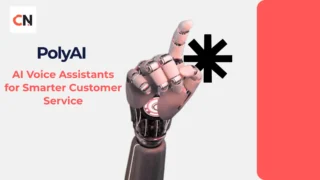
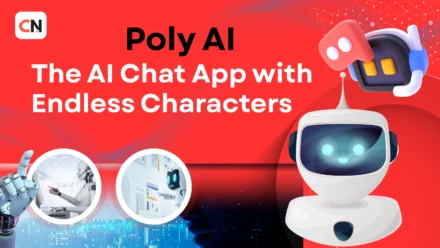
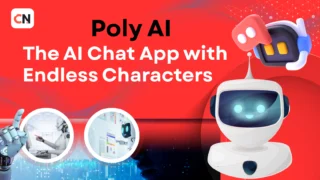
Leave a Comment